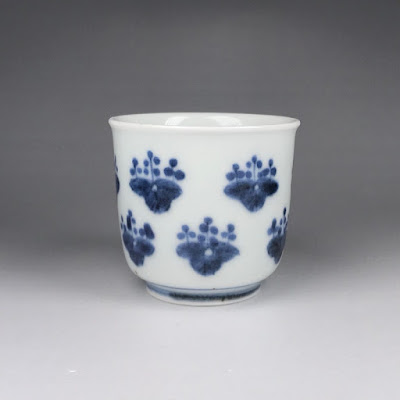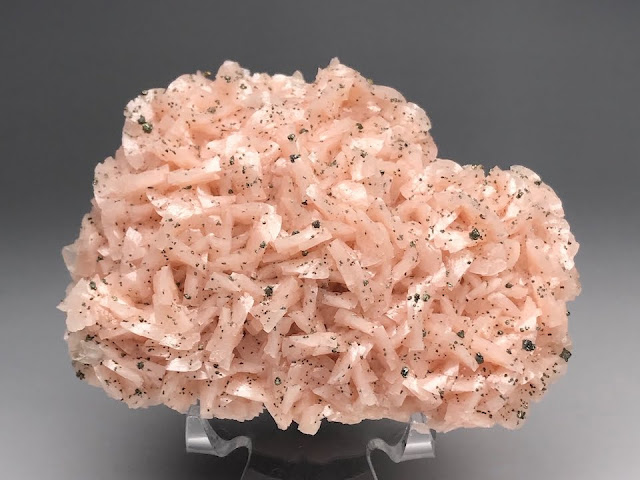方解石と黄鉄鉱仮晶 Calcite, Pyrite Pseudomorph

埼玉県秩父市中津川 秩父鉱山 道伸窪鉱床 Doshinkubo Deposit, Chichibu Mine, Nakatsugawa, Chichibu City, Saitama 幅 width 60 mm / 重さ weight 118 g 方解石(CaCO 3 )は、全体としては犬牙状の結晶のようであるが、表面がゴツゴツしていて、結晶形成後に再び結晶化(もしくは溶解)作用があったことを暗示する。ほんのりピンク色を呈する。標本に添えられていたラベルには「含マンガン方解石」とあった。黄鉄鉱(FeS 2 )の結晶の一部は、最大径 2.5 cm ほどの薄板状に集合しており、もともとは別の鉱物があって、その後、黄鉄鉱に変化したことを示唆する。おそらく磁硫鉄鉱(Fe 7 S 8 、一般には Fe 1-x S)の仮晶だろう。赤銅色の塊状の部分が残っていて、微力ながら磁石を引きつけるので、ほぼ確実とおもう。 文献によれば、秩父の磁硫鉄鉱というと、赤岩鉱床がもっとも有名で、最大径 5 cm に達する六角板状結晶が知られている。表面が褐色の鉄水酸化物に変質しているのがほとんどで、一部は白鉄鉱化しているものがあるという。磁硫鉄鉱帯は石灰岩体のもっとも底の部分に発達するので、方解石との共生はありそうなことである。道伸窪は、赤岩の東方約 1 km ほどのところにあり、磁鉄鉱の鉱床がひろがっていた。磁硫鉄鉱も磁鉄鉱鉱床中に産出したが、このような径 2.5 cm クラスの大きな結晶がみられたかどうか、文献からはわからなかった。 Calcite forms a slightly pink scalenohedral crystal with a rough surface, implying a secondary crystallization (or dissolution). The original label was "manganoan calcite". Pyrite crystals gather to form a plate with a diameter of 2.5 cm, suggesting a pseudomorph of a different mineral species. The original one wou





